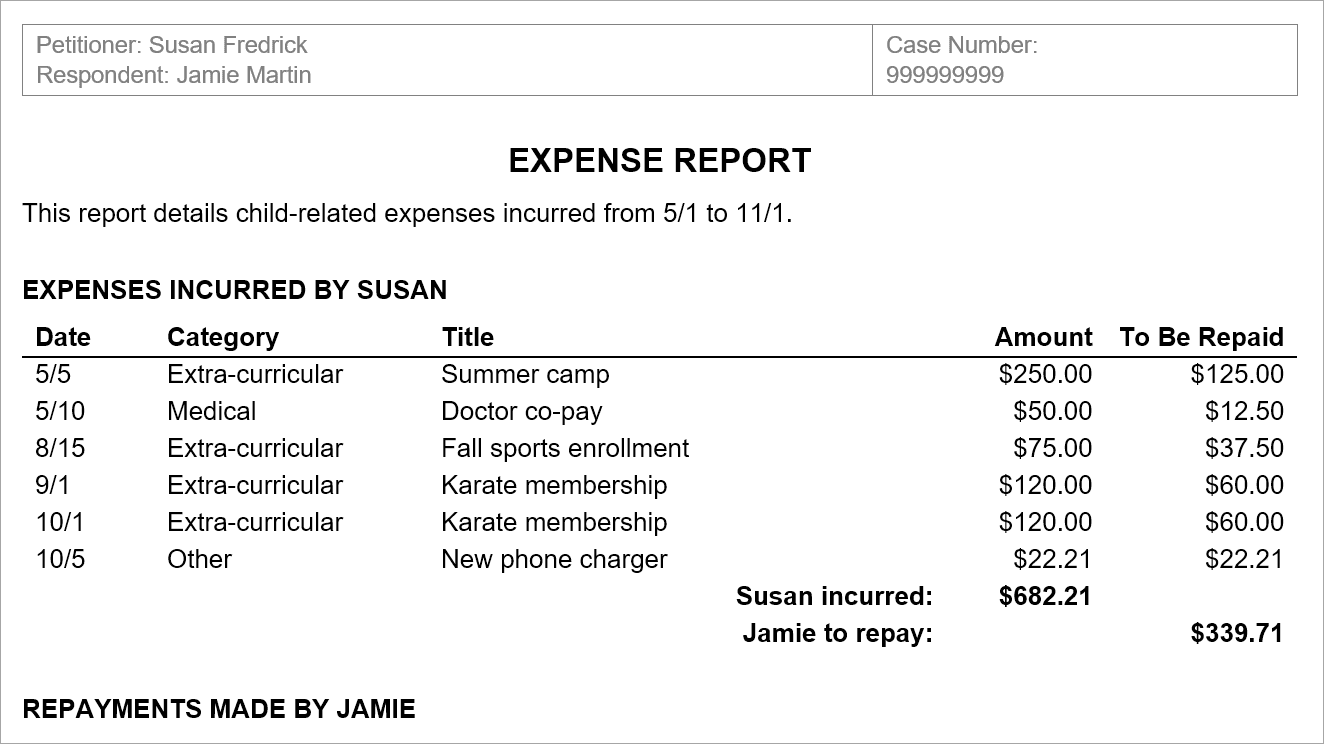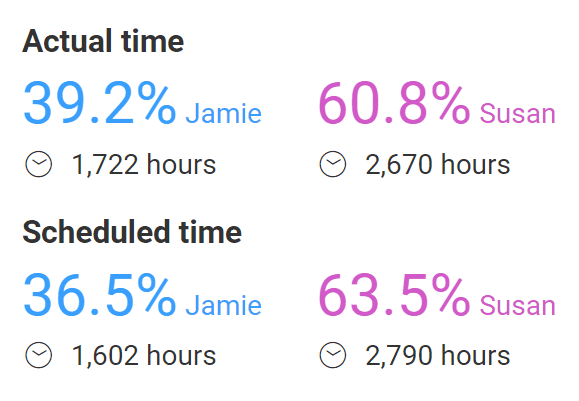Custody Documentation in Court: Binders, Journals, Etc.
When you represent a parent in a custody case, there's a multitude of information your client can supply to support their claims. Let's identify the custody documentation that could be most valuable.
Court custody documentation
Documentation for court may address the child's:
- Physical, mental and emotional well-being
- Relationships with each parent, siblings and other family members
- History of care
- Academics
- Social life
And each parent's:
- Parental fitness
- Time spent with the child
- Willingness to encourage a relationship between the child and the other parent
- Finances
- Behavioral history
Remember only to document evidence related to the child's best interest.
Often, the best documentation falls into the following categories.
Proposed parenting plan
Show that your client has a plan for the future by helping them prepare a parenting plan. Many courts require parents to turn in a plan.
Expert reports
The court may order a custody evaluation to assess each parent's parental fitness, or you and your client may request one. Evaluations give insight into family dynamics and each parent's ability to provide for the child's needs.
Custody journal
A custody journal helps your client document important events and make notes about the goings-on in the child's life.
It's a crucial type of documentation for custody cases, which is why journaling is part of the advice you should give clients on day one.
The court will want to know whether your client has an established relationship with the child. In a journal, your client can write about:
- Taking the child to doctor's appointments
- Attending parent-teacher conferences
- The child's achievements and milestones
- Activities, trips and vacations with the child
- Any noticeable changes in the child after visiting the other parent
- Whether the other parent is late to or misses visits, and why
- Interactions you client has with the other parent
- Ways the other parent addresses your client in front of their child
Photos and videos
Photographs of your client's home can help paint an image of the child's environment. Family photos and videos can show your client's parental fitness as well as support allegations, such as abuse allegations.
Financial records
Financial records, of course, are important for calculating child support. They can also help show that a parent is able to provide a comfortable home and lifestyle for their child.
List of child-related expenses
The court will want to know whether parents are providing for their child financially. Track child-related expenses to prove how much your client contributes to health care, education, extracurriculars and more.
The child's expenses may also factor into the child support calculation. If your client's contributions amount to paying child support without a court order to do so, that could be worth bringing up at a support hearing. Or, if your client has extraordinary expenses for which they will request additional child support, be sure to have clear documentation. Include receipts in the expense log.
 You can customize this with Custody X Change.
You can customize this with Custody X Change.
Proof of residence
The court will want to know that your client can provide a stable home for their child. Rent receipts, deeds and photos are a few examples of documents that can show your client has a safe space for their child to live and grow.
Custody calendar
Provide a custody calendar to show the current schedule the parents are following.
A clear schedule can weigh heavy in the judge's decision as they won't want to make too many changes to the child's routine — so long as the current situation is safe.
Parenting time reports
A report on scheduled parenting time shows how much of the caretaking your client does. It can help prove who has provided the child's primary residence.
A report on actual parenting time is useful when parents are not sticking to their schedule. It compares the time your client was supposed to spend with the child to the time they actually received.
 You can customize this with Custody X Change.
You can customize this with Custody X Change.
Records of communication
Get a record of parent-to-parent and parent-to-child communication from your client.
Records of communication could prove that your client has encouraged a positive relationship between the other parent and the child. They might demonstrate instances of the other parent misbehaving (e.g., threats, name-calling, poor parenting).
Collect texts and emails. Instruct your client not to delete any conversations (nor to let their device delete conversations automatically). If parents message through a co-parenting app, the messages feed into an organized report and can't be deleted or altered.
In some states, audio recordings are admissible in court.
The child's records
Records related to the child can include medical records, report cards and more.
Records could provide a clear comparison of the child's behavior in one parent's home versus the other's. For example, if the child's grades decline when with one parent, their home life may be disrupting their ability to learn.
Police and court records
Collect any court orders involving the parents or the child.
Get a copy of the other parent's police record if they have one.
Documentation is vital if your client makes a serious accusation like abuse. Accusing abuse without evidence could hurt your case.
Character witness statements
Some courts allow parties to submit character reference letters from third parties. The child's teachers, coaches and other people involved with the family can write letters to testify to your client's parental fitness.
Custody documentation binder
A custody documentation binder helps you organize your paperwork so you're ready to present your case coherently. Fumbling through documents — or leaving the judge doing so — can give off the impression that you're unprepared and can also waste the court's limited time.
To prepare a binder, you'll need a three-ring binder and section dividers. Putting each document into a clear plastic sleeve is optional. Add blank sheets of paper for taking notes during the hearing.
Start with a table of contents. Put the court documents first, then follow with your opening statement, evidence, witnesses, and lastly, the closing statement. Each witness should have their own section with questions you will ask them and the documents they will be discussing.
Use section dividers to separate your evidence. Consider labeling each tab by the part of the best interests standard it satisfies (e.g., parental fitness). Or correlate the documents to what you're trying to prove. For example, if one of your client's claims is that the other parent doesn't try to establish a relationship with the child, put all relevant records in that section.
Bring binders for the judge, witnesses and the other party. (If your judge or court does not like binders, bring copies of each document instead.) Your own binder might include additional information and notes so you'll know the main points you want to get across.
If your court has the technology available, you might create a digital presentation to accompany your binder.
Staying organized
You have to keep track of numerous reports and documents for each of your custody cases. With the Custody X Change online app, create and store them in one place.
In Custody X Change, you can make:
You can also collaborate with your client as they keep a custody journal, track expenses, and message their co-parent through the app.
Custody X Change keeps you organized, making your work easier and your clients happier.
